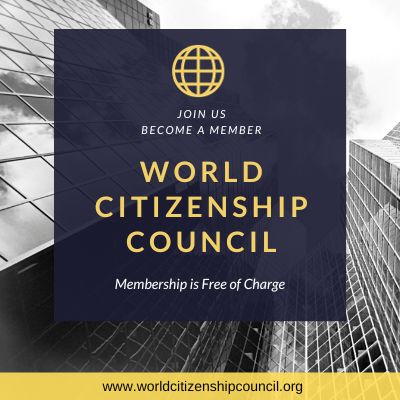Paola De Leo, Head of Group Philanthropy, Henley & Partners, UK and Executive Director, Andan Foundation, Switzerland
Inside the Refugee Camp Where Technology Improves Lives
Ordinarily, the advancements in technology that receive the most airtime are those that serve the relatively affluent communities that can afford them. Whether it be the latest smartphone, electric car, or innovative nanotechnology, there is something deeply seductive about the kinds of tech that enhance our lifestyles and play directly into our propensity for material aspiration. Meanwhile, however, hugely exciting developments are also taking place at the very opposite end of the spectrum. In recent years, for example, enhanced connectivity and the wide diffusion of mobile telephones have reached most remote corners of the world, resulting in a significant improvement in the lives of the poor. We have seen how mobile banking facilitates their financial and economic inclusion, how mobile healthcare and education has reached millions previously beyond the boundaries of these services, and how new technologies — such as solar and hydro power — have provided access to energy without building expensive power plants.
For the past four years, residence and citizenship firm Henley & Partners has been keenly supporting the work of the United Nations High Commissioner for Refugees (UNHCR), the UN’s Refugee Agency. In May, a delegation from the firm was invited by the UNHCR to travel to Jordan to visit the Zaatari refugee camp, one of the most advanced refugee operations in the world. The group included REVIEW Editor in Chief and Henley & Partners CEO and Chairman Dr. Christian Kälin; Henley & Partners’ Head of Group Philanthropy Paola De Leo; former CTO of Cisco Services Monique Morrow; and Russian entrepreneur Evgeny Tugolukov. The field trip was a richly rewarding experience that offered insight into the impactful lifesaving new technologies being used in this humanitarian context.
Henley & Partners’ support to the UNHCR has been primarily focused on funding refugee registration procedures and identification documents, a theme very much in line with the firm’s core business. When the partnership between Henley & Partners and the UNHCR was initiated in 2014, the situation in Jordan was desperate, with thousands crossing the border from Syria each month. At the time, over 51.2 million people had been displaced. To simply record and register all of their identities is an onerous and intimidating task, before even beginning the critical work of providing refugees with access to basic services, aid, and protection.
Today, four years later, the figures for displaced people worldwide are no less staggering. At the last count, the number stood at a record high of 68.5 million. However, with the intelligent use of technology based on biometric data collection methods and far-seeing investment of resources, the UNHCR has turned refugee registration into an efficient and impressive survival mechanism.
During Henley & Partners’ visit to refugee registration facilities in Amman, the delegation witnessed how the entire registration process is conducted today. One of the first major technological developments was the introduction in 2014 of biometric registration and iris scans to enable quick and accurate identification of individuals by registering an image of their eyes.
The advantages of accurate biometric recognition and registration were apparent from the start as this fail-safe identification method prevents refugees undergoing double registration either in camp settings or during the passage between two different countries. The success of the intervention has, however, exceeded all expectations, and verified and secure refugee identities are today at the core of an entire system of identity management and service delivery named PRIMES, the Population Registration and Identity Management EcoSystem. PRIMES consolidates all UNHCR data previously stored in over 500 databases worldwide into one single database that can be accessed via the web and serves as a mainframe that includes all interoperable UNHCR registration, identity management, and caseload management tools and applications. The result is a streamlined service that ensures maximum capture of data and access to information.
Refugee data are initially recorded at registration centers in Amman, Mafraq, and Irbid, where refugees first arrive having crossed into Jordan. After the collection and verification of documents, the UNHCR immediately identifies those who are most in need, such as children belonging to female-headed households, separated children, and people with disabilities. Furthermore, mobile registration centers and offline data collection applications allow UNHCR staff to reach refugees in more remote and rural areas, as well as those in hospitals or otherwise unable to reach an urban hub. Continuous registration activities then go on throughout the year, keeping an updated record of births, deaths, and marriages, alongside any additional information relevant to the circumstances and requirements of individual refugees. This allows for effective case-by-case management and the precise delivery of services and responses to the needs of individuals.
However, the benefits of iris scanning do not end with collection of data about refugees. In most host communities, refugees are not allowed to work and provide for themselves. They are therefore supported by charitable donations that are channeled through the UNHCR and a number of other organizations worldwide. Another brilliant technological intervention called EyeCloud facilitates the delivery of financial assistance to refugees through a combination of banking and biometric technologies, based exclusively on UNHCR biometric registration data. In essence, at a number of cash machines in camps and in towns, EyeCloud scanners identify individuals by reading the pattern of their irises and then release their available funds accordingly. This system replaces the need for cards and chip and PIN technology, and bypasses the difficulties refugees face in opening bank accounts. In 2016, over 30,000 households received monthly cash assistance, winterization cash, and cash for health, totaling nearly USD 85 million. One may speculate that such technology will even become indispensable in retail centers in years to come.
In a collaborative way, EyeCloud can also be paired with other organizations as PRIMES is interoperable with the multiple IT systems used by various governments and partner organizations. For instance, leveraging on the biometric registration conducted by the UNHCR, this year, the World Food Program launched EyePay®, an iris-enabled point-of-sale platform that uses blockchain authentication to process supermarket transactions via the Ethereum cryptocurrency ledger. While providing secure identification, the technology allows a more dignified access to food distribution, avoiding common kitchens and food vouchers. An individual refugee can go to any supermarket wired to EyePay® and, at the checkout, a biometric scanner reads their iris, checks the blockchain database to confirm their identity and funds, and then authorizes their purchase.
All in all, the signs are very encouraging for technological innovation in the Zaatari refugee camp, with tangible benefits already reaching those who are most in need. For the Henley & Partners delegation, the trip to see how registration technology is improving refugee lives was doubly rewarding because it showed how the firm’s specific interventions were making a difference and offered encouragement that the support to the UNHCR is paying dividends in terms of its humanitarian impact.
The UNHCR partnership has not only proved successful from a humanitarian point of view — it has also yielded a significant influence on the firm’s corporate culture with the involvement of staff, management, and partners in the refugee cause. UNHCR speakers invited to participate in Henley & Partners conferences have shared their passion for this cause with a large audience all over the world.
Henley & Partners is proud of having been able to contribute in some small degree to the improvement of the refugee situation and is motivated to do more and scale up its impact, bringing its experience to others and to its clients and partners. A new venture will soon be unveiled to demonstrate the firm’s renewed commitment and even more determined desire to support the UNHCR in its professional and lifesaving work.





